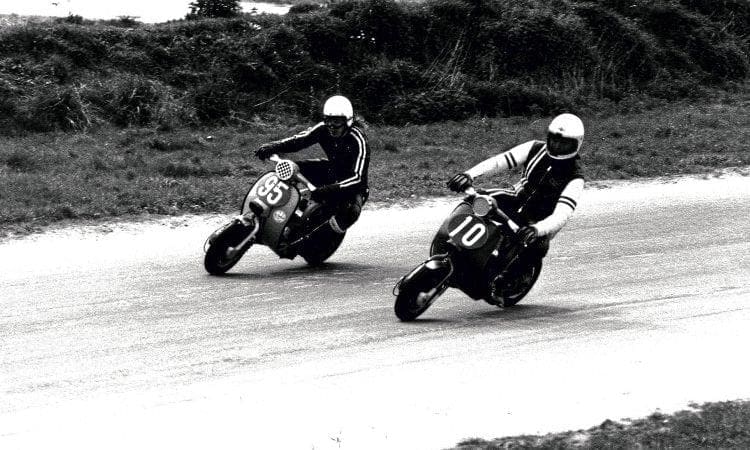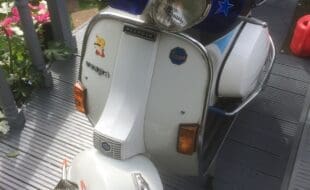Though scooter racing dropped out of the limelight in the mid-70s, to those taking part it was still as popular and championships were there to be won. Richard Wilfang was in it to win it.
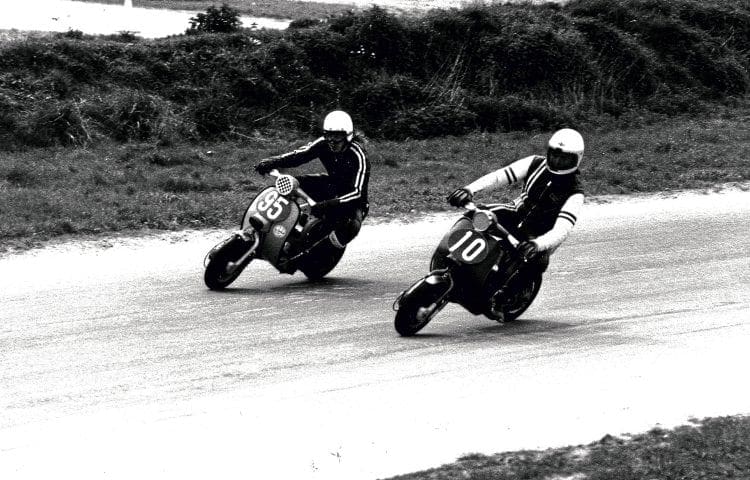
The scooter racing boom of the late 1960s and early 1970s was a heavily contested and well-promoted affair in its day. With the Lambretta stopping production by mid-1971 it was thought by many that the racing scene would slowly die off. Though scooter ownership was in general decline by this time a younger generation would now take it over. Gone were the days when the Lambretta and Vespa appeared in mainstream press, slowly pushing the scene underground. With it went scooter racing and though it wasn’t breaking news any more, this didn’t mean it wasn’t happening. Nothing could be further from the truth; with the grid as full as it ever had been the competition was just as fierce. With many riders now having had several years under their belts to hone their skills, becoming a champion was an even harder feat to accomplish. Only the best would make it to the top and one person by the name of Richard Wilfang would do exactly that,
Saving for a TV
Having left school in 1967 like most teenagers back then, Richard went straight into employment courtesy of an apprenticeship. The meagre £6 a week wages didn’t go that far but slowly there was enough to save up for a scooter. The older less desirable models were to be had for a bargain and soon there was enough money put by to purchase a TV 175 Series 11 Lambretta.
Enjoy more Scootering reading in the monthly magazine.
Click here to subscribe & save.
Though the Mod era was well and truly gone by this time, some owners would still follow the fashion certainly — when it came to the scooter. Richard was no exception, with a host of mirrors, lights, racks and super loud exhaust to weigh it all down with.
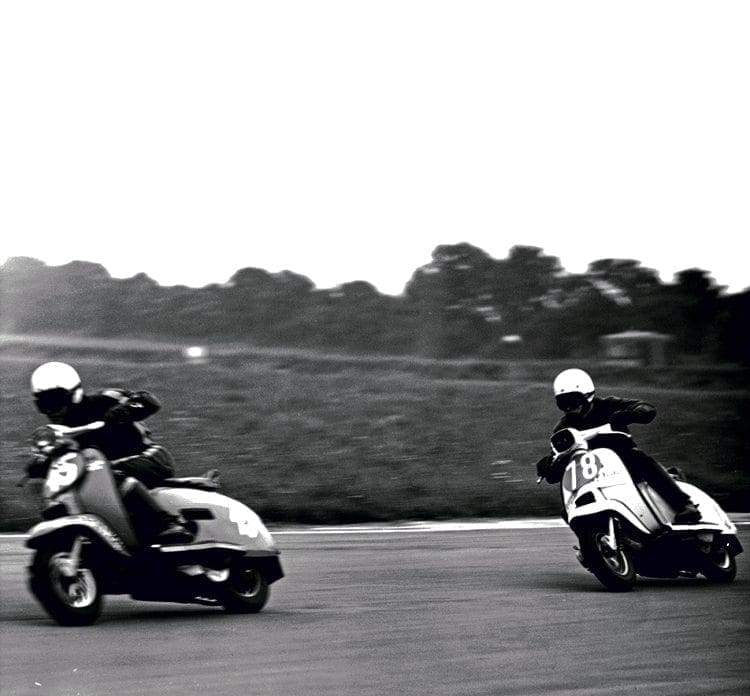
For the first few months, most of the time would be spent driving it around posing proudly like a peacock. Haunts such as the local youth club were the main destination. The local scooter shop was within five miles of Richard’s house and it was there he would often part with his hard earned money to cram even more metal work on to the scooter. The shop went by the name of Roy’s of Hornchurch, which would go on to be an epicentre in the scooter racing scene.
On one such visit, there were a group of four or five Lambretta owners from The Vikings West Essex Scooter Club. Having chatted to them for a while Richard was duly invited to their Thursday night club meet. Upon his first visit, his scooter stood out more than it ever had done before.
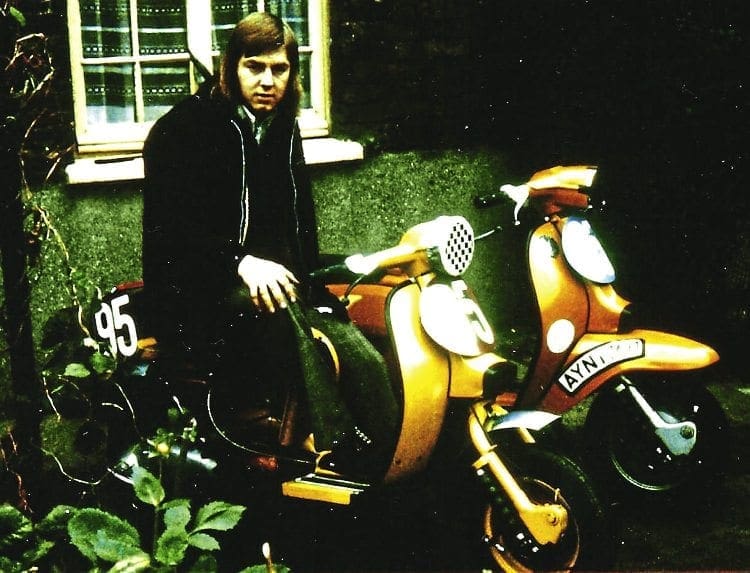
Most members wore racing overalls and their scooters were entirely devoid of any chrome work. All had a hole cut in the left-hand side panel to help the huge carburettors fitted breath more easily. It was a far cry from how Richard had perceived a Lambretta to be and what it could actually do.
The 1960s was a period of rapid change and nothing lasted long before moving on. He was quickly put under the spell of The Vikings’ influence and soon moved in a different direction.
A change of fashions
The impact of meeting the club members was a quick and effective one. Without the slightest thought almost a year’s worth of amassed mirrors, lights and such was quickly removed and binned. A pair of knobbly tyres fitted and hey presto a grass track scooter was born. Grass track racing had been popular for a few years and, with no major upgraded required, it was easy to have a go at. It was a radical change of direction in such a short space of time but one Richard was eager to make.
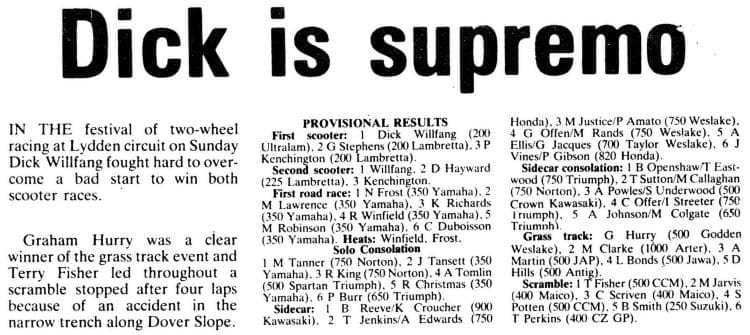
During 1968 he would enter several grass track races picking up trophies along the way including winning the loW sand race. Later that year at the BLOA LCGB Southend rally, he would become grass track champion over several races. This not only highlighted Richard’s hunger for racing but showed he possessed a natural talent for it. With the club seeing his potential, it was decided he should now move to circuit racing. This would require some preparation but as 1968 came to a close he decided to give it a go.
Honing one’s skills
“They wanted me to go racing,” was how Richard put it, “and I knew it was the right thing to do.” A crash course in tuning was now required to try and make the old TV more competitive. The first job was to increase the capacity, an oversize piston giving 192cc, just below the 200cc class limit. A high compression head, Amal MK 1 carb and some porting would complete the top end. The tuning was finished off with baffles being removed from the exhaust, and so from the ashes of his fancy Mod machine a lean racing Lambretta was born.

His first race was at Mallory Park on March 2, 1969. Though no official championship would start until 1970, this was the year it would develop with several races organised to see if it could actually work. As Richard said: “We would ride our scooters to the track, race them, then ride them home.” The idea of a van to transport the scooters was unheard of, which is a shame as that day in early March of that year was bitterly cold. So cold in fact, that before racing could commence the clerk of the course demanded salt was thrown on to certain parts of the track to melt the frozen surface. With ice-cold temperatures and a freezing track, it would be enough to put any first timer off but not Richard Wilfang. Not only did he finish his first ever race a respectable fifth out of 27 riders but in doing so also managed to lap one of his teammates in the process.
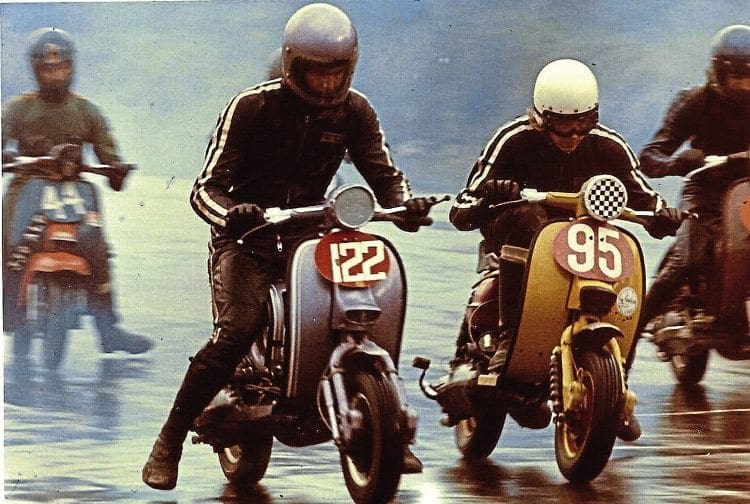
For now, he was content just going racing with his fellow club members, trying to learn the art of riding fast and developing his tuning skills as best he could. For a while it all worked well as the teammates bounced ideas off each other and became a strong force. However, nothing lasts forever and as time went by he decided that a change was needed. By the early 1970s, scooter racing was well established with a fully organised national championship. An abundance of both teams and riders had sprung up from all over the country with everyone being eager to win.
Moving on
Whether or not Richard felt the club he’d joined was holding him back is uncertain but before long he and fellow teammate Doug May broke away to form their own team, Quantum Plus. Though they would amass a fair number of points towards the championship, a small two-man team could never win it. It was decided to join forces with a group called Consortium and together they walled be known as Quantum + Consortium. Now boosted to five members, it would still be small in numbers compared to a team the size of Bellerophon but what it did have was a group of dedicated and talented riders.

By now his tuning skills were starting to develop and an engineering background was certainly helping. Using books and magazines articles as a reference as well as help from a friend who had good experience with two-stroke tuning the engines Richard built were becoming more powerful. More often than not they would be tried out in his road-going Lambretta to see if new modifications had worked. It was also a great way of bedding in new pistons and rings before a race meeting to prevent seizing.

Changes were afoot courtesy of those who governed the race championship, making it even more competitive. Classes would be put into numbers as more and more organisation started to happen within the sport. A 200cc standard Lambretta it would now be classed as Group 4. Group 6 was the specials, which allowed far more scope for the engine as well as the frame. This is where Richard excelled, building his own special not only tuning it but doing all the engineering modifications. It gave him great satisfaction to go racing knowing that he had built and tuned the machine himself.
Dedication finally paying off
It had now been five years since that debut on a cold frosty morning at Mallory Park. With the 1974 season in full swing, not only was Richard a leader at the front of the grid but the team was becoming very successful. So much so they took the team championship that year. For such a small team it was a great achievement only to be bettered by winning it again in 1975. For Richard though there were even greater things to come. That year would see him win all but one of the Group 6 races making him the overall champion. It was an honour every scooter racer in the last 50 years has wished for and put him in that elite class of winners.

Becoming overall champion gives a racer the honour of the number 1 on their machine the following year, which he duly accepted. However, an agreement with his wife meant that if such great heights were ever achieved then it would be time to quit. Having managed to do five years of competitive scooter racing and come out of it relatively unscathed was a feat by itself. It must also be remembered that when you have got to the top the only way is down so perhaps it is the best time get out. Walking away from something you enjoy doing or are passionate about is never easy to do so the easiest way to stop temptation is to get rid. Being friends with Mick Hayman, an up-and-coming racer, Richard agreed to sell his special to him. The deal was for him to prepare the machine at his workshop for Mick before each race. That way though he wasn’t racing any more there was still a way of being involved. After several races, Mick took over preparing it himself and the racing story for Richard was over, or was it?
Temptation
An invitation to race at the Festival of Speed at Lydden Hill in the summer of 1976 arrived. It was a popular event for both scooters and motorcycles and was widely followed by the press. The problem was the special was now sold but the lure of racing with the number 1 plate was just too much. Like any Lambretta owner, Richard had accumulated a whole host of spares, enough to build another machine. By the time of the meeting, a Group 6 special was built and ready to race. Being one of his favourite tracks would definitely help and was part of the reason he won both races that day.

It was the only time he ever raced with the number 1 on the scooter and now having won with it, it was much easier to call time on a great racing career. Like so many, once the racing stopped he had very little interest in it afterwards. It wasn’t until last year that by chance an invite to a Facebook group rekindled his interest. Not only was he happy to see that scooter racing was still thriving but amazed by just how fast they are now. Having looked at some of the engine work he said: “Today’s engines produce so much more power than we ever dreamed of.”
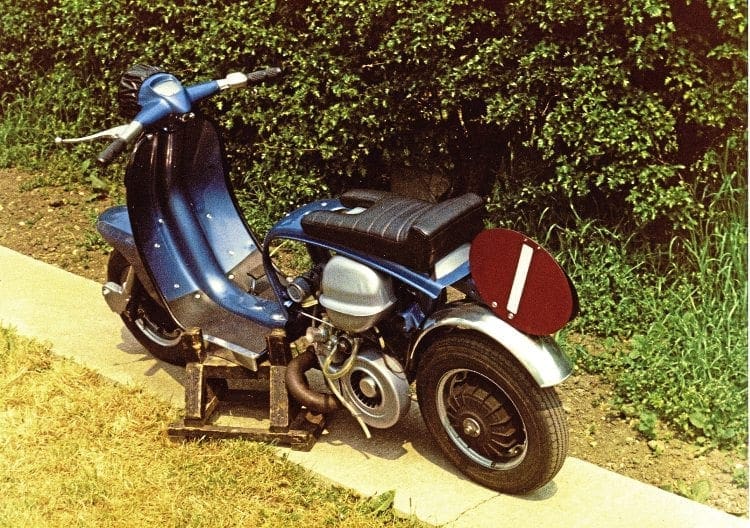
It’s easy to comment on different eras in any sport, asking whether those back then would manage in today’s climate. That can quite often be reversed – could today’s current crop deal with the equipment and conditions that were on offer back in the 70s? When it comes to racing you can only go on what was available to everyone at a specific period in time. For Richard Wilfang in the mid-70s it was simple – he was the fastest, a champion and number 1. It was his time.
Words: Stu Owen

Enjoy more Scootering reading in the monthly magazine. Click here to subscribe.
Scooter Trader


